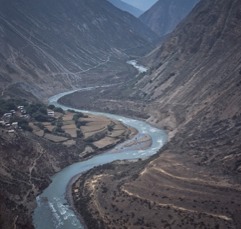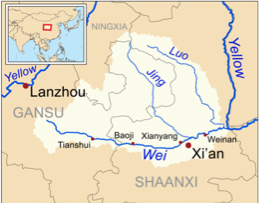Sign up for FlowVella
Sign up with FacebookAlready have an account? Sign in now
By registering you are agreeing to our
Terms of Service
Loading Flow


The Wei River
渭河 Wei He

The Wei River was one of the main rivers that was under the Zhou dynasty, and is the Yellow River's biggest tributary. It is 860 km long and is a major river in the Gansu and Shaanxi Provinces. It flows from the Gansu Province and joins to the Yellow River. The Wei River is the largest tributary to the Yellow River, and the Luo River and the Jing River are the two main tributaries to the Wei River. The climate around the river is cold and dry, and in winter, the average temperature is 0 degrees.
The civilisation developed around the Wei River because they wanted to escape the conflict between themselves and northern nomadic groups. They also settled there because of its fertility and workable soil and they were interested in farming and agriculture. The river played a very significant role in the development of the Chinese civilisation, especially agriculturally. Their main crops that they grew were rice, wheat, cotton and sesame.
The Wei River was one of the first rivers with an irrigation system which was created in 3rd century BCE. However, it was abandoned in 9th century CE, but was reconstructed in the 1930s. It was, and still is a main route to travel from China to Central Asia.
BY TIFFANY HONG

